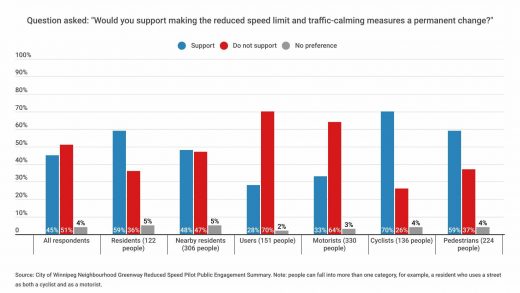Opinion: Tories’ ER consolidation a catastrophic gift that keeps on giving
Wait times for patients in emergency departments awaiting a hospital bed have skyrocketed over the past three years.
The median length of stay for admitted patients in Winnipeg ERs and urgent-care centres jumped 64 per cent in 2022 compared with 2019, according to Shared Health data obtained by the Free Press. The wait time was 21.4 hours last year, up from 13.1 hours in 2019, the year before the COVID-19 pandemic.
And it’s showing no signs of improvement. The median length of stay in January was 22.5 hours.
Wait times for admitted patients in ERs is the single most important indicator of how severe hospital overcrowding has become since the province began consolidating acute-care facilities nearly six years ago.
The Progressive Conservative government’s decision to close three emergency rooms and convert them to urgent-care centres between 2017 and 2019 was supposed to streamline hospital operations and provide patients with speedier care. The opposite has occurred.
Patients sick enough to be hospitalized are piling up in emergency rooms because there are no hospital beds available for them on medical wards. So they wait — hours, sometimes days. The longer they wait, the faster their conditions deteriorate. ERs are not designed to provide patients with extended hospital care.
The more patients there are in ERs waiting for a hospital bed, the less time overworked emergency physicians and nurses have to treat newly arriving patients. So they wait longer, too.
“The availability of medicine and surgical beds is constantly evolving but have generally been very tight at Winnipeg sites for the past year, causing patients requiring admission to wait longer in emergency departments and urgent-care centres,” a spokesperson for Shared Health told the Free Press.
“When this continues as it has for a prolonged period of time, it creates space and resource issues that further exacerbates wait times and generates additional stress for our staff.”
The main problem is an acute shortage of hospital staff, particularly nurses. There aren’t enough of them to adequately staff hospital beds on medical and surgical wards. The pandemic made the situation worse and a national nursing shortage isn’t helping.
However, hospital consolidation caused the most damage, including the disastrous manner in which it was rolled out. Most hospital staff, including many middle managers, were not consulted on the changes, a 2018 Winnipeg Regional Health Authority interim evaluation found.
More than 3,000 hospital positions were deleted and re-posted during the first phase of the reorganization, forcing many staff to change jobs and places of employment, often against their will. Some didn’t feel qualified for the new positions and quit, moved to the private sector or retired early. Many of them are never coming back. At the same time, the PC government cut funding for acute-care hospitals, forcing health authorities to manage consolidation and budget cuts simultaneously. It was, and still is, a mess.
A second interim report in 2019 written by Nova Scotia consultant Dr. David Peachey, who recommended hospital consolidation three years earlier, found the rollout was so poorly executed, patient care was compromised.
“Across all WRHA hospitals, nurses have been inadvertently trapped by previously unknown levels of stress, exacerbated by a mixture of unpredictability and under-resourcing that have been fallouts from consolidation,” the report found.
“Across all WRHA hospitals, nurses have been inadvertently trapped by previously unknown levels of stress, exacerbated by a mixture of unpredictability and under-resourcing that have been fallouts from consolidation.”–Report
Many of the current problems in hospitals were self-inflicted by government.
The upshot is patient care continues to deteriorate for those languishing in emergency departments, as well as newly arriving patients, who are enduring he longest ER wait times since at least 2014.
It’s not because more people are showing up at ERs and urgent-care centres than before (or because they’re going to the “wrong place” as government falsely alleges). The number of people presenting at ERs and urgent-care centres fell 10 per cent between 2017-18 and 2021-22. Hospital overcrowding and ER congestion is happening because there are fewer staffed beds in the system than there were prior to consolidation (138 fewer as of 2021-22) and many nurses have fled.
There’s no way of fixing that overnight.
Tom Brodbeck
Columnist
Tom has been covering Manitoba politics since the early 1990s and joined the Winnipeg Free Press news team in 2019.
Read full biography
Credit: Opinion: Tories’ ER consolidation a catastrophic gift that keeps on giving


